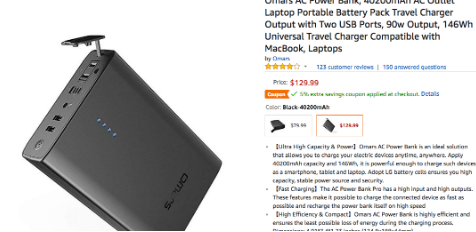8 use cases of Machine Learning Technology for Offline and Online Retailers

Oumnia El Khazzani
over 5 years ago

Retail is one of the most affected industries with Machine Learning. One of the cornerstones of machine learning is data, and retail is an industry that is ripe with data, be it from brick & mortar stores or online shops.
Leading retailer, Amazon, owes part of its success in applying AI in all aspects of their business. Today, competitivity means integrating new technology in a wide span of areas of business, from e-commerce to logistics.
Retail is one of the leading industry when it comes to adopting machine learning. The technology has to potential to boost margins and profits, which is crucial in such a highly competitive sector.
In this article, the Swish machine learning team shares eight practical applications of machine learning to retail companies for more efficient operations, improved user experience, sharper marketing insight, and increasing sales.
Personalization
Perhaps the most widely adopted machine learning application is the idea centered around personalizing the shopping experience.
Product recommendations have proven to be of great success in retail and beyond (the way Netflix or Youtube do it). Given the data a user generates when browsing a website, retailers are able to show relevant items, thus, users are more likely to purchase them.
Previous browsing or purchase history, account profile details, location, or even time of the year, are all data available to website/app owners - the retailer. When using this data, it all can play a part in what items appear on the screen of a user, making the experience catered to their likes and needs.
Online shopping personalization is like having a personal stylist helping you browse an eclectic shop: it saves you time and makes the shopping experience more delightful.
The Machine Learning algorithms take the individual user and everyone else’s data into account. They spot patterns such as items being frequently purchased in the same order, items with common review scoring or users with a similar pattern and what they like. Then, these items are strategically surfaced to increase click-through rates and conversion.
Personalization is about tailoring the experience to the user’s needs and supporting the retailer's sales.
Other applications are used to enhance the personalized experience such as digital assistants and visual search.
Digital Assistants
Online shopping differs greatly from an in-store experience as the customer is alone in front f his screen (versus benefiting from the help of a salesperson in store) but, with the advancements made in chatbots, it does not have to be the case anymore.
Chatbots have become widely successful with the progress made in Deep Learning. Once just a large set of predefined questions and answers (Iterative Models), chatbots are now able to generate real responses using sequence-to-sequence networks (Generative Models).
Combine the two models, train them well and, many people won’t notice the difference between a chatbot and a human.
Give the chatbot the ability to connect with the website and perform actions and now you have a digital assistant.
Digital assistants can perform tasks such as surfacing product recommendations, answering questions about the product, taking rainchecks or general customer support inquiries.
Communicating with a bot and having it do the customer relationship work provides a greater holistic online experience to the users and unload internal teams from customer service tasks.
When users accept it, conversation content can be stored and used as a source of insight from Marketing, Sales, Customer Satisfaction and Fulfillment teams.
Visual Search
Visual search is a branch of personalization for physical clothing stores. Imagine walking into a store and going straight to the mirror. The mirror then scans your body type, using computer vision, and provides outfit recommendations of items that are in-stock at that moment.
Some startups are taking it as far as to create an image of what the clothes would look like on the shopper. This application of machine learning is still in its infancy stages but its potential makes it worth mentioning.
The Machine Learning team at Swish has been working on creating such a tool in-house. More to come on this very soon!
Dynamic pricing
With all the data collected from users behaviors on the digital platforms, Machine Learning isn’t just calculating what items to show but also what price to set.
Most consumers are fairly price-sensitive when it comes to mass retail items. Checking prices has never been easier since all it takes is to open another tab on your browser.
Through data pipelines, sellers can actively monitor their competitors' prices and automatically match or beat.
Retailers are also using consumer behavior data to apply special pricing in several different ways. Dynamic pricing is a part of the personalized experience such as “Click on a product recommendation and receive a “special price” just for you.”
Amazon has a couponing system that increases the number of coupons displayed next to products (as in the image below) once a user has already put an item in their cart as they are classified as "likely to purchase." The e-commerce site uses this technique also on items users have previously viewed, classifying them as are more “likely to purchase”.

Amazon giving a coupon on a previously viewed item.
Classifying users as "likely to purchase" is an exercise in Machine Learning. By tracking user behavior, a machine learning model can find behavior patterns that are most likely to lead to a purchase, or, on the contrary, to the user leaving the website.
Equipped with this data, retailers can experiment with preset rules on how to apply different pricing strategies to entice their customers to take specific actions.
Fashion Trend Analysis
Fashion retailers have a few specific use cases of their own. One of them is fashion trend analysis.
Social media has a wealth of data, which is what Machine Learning models thrive on. Algorithms can find trends and patterns out of data, and the larger the set of data, the better.
Number of likes, comments, number of followers and even the content of an image itself can be used as inputs in a machine learning model to help classify what is trending in fashion (of course, given that the user, the platform’s policy/state or country law grant access to this type of content).
With real data to identify what’s hot and what’s not, retailers can better serve their customers. Whether it is by ordering more inventory (more on that below), identifying what to feature on the website homepage, displaying items in store windows or having special promotions around determined items, knowing what is in style is key in this part of the retail industry.
Machine learning advancement offers in-store benefits too.
Depending on how vertically integrated the retailer is, the entire supply-chain holds applications for machine learning. Our focus will be on inventory management here but see our supply-chain write up for more on this.
Inventory management
Inventory Management starts with predicting demand. Once a demand level is determined, it is a matter of reverse engineering to predict the number of items required.
Predicting demand for a product is a difficult task across all industries and can be very costly when done wrong. Predicting too little demand results in missed revenue opportunities and unsatisfied customers. Predicting too much demand creates product waste and extra storage cost. Choosing how many and when to rebuy is an ever growing-in-complexity optimization problem.
Predictive machine learning techniques can help automate an optimal solution to this problem.
The key to all successful machine learning models is quality data and fortunately, retailers have a lot of it. Time to delivery, previous years sales, storage constraints, margin of error, in style trends ( for clothing retailers) and even social media posts around a product are just a few data points that help predict demand in a machine learning model.
Using the large amounts of data, machine learning models are able to discover patterns/correlations not visible to the human eye. One common approach to solve this problem is to use LSTM Network which is a type of recurrent neural network. It is widely used and successful because it takes into account not only a current static picture but all past data points (hence “recurrent”) as well to help predict demand. Time series analysis is useful because it often discovers patterns like seasonal correlation or time-lagged correlation (past affects future) between input variables.
Checkout Free Shopping
Pioneered by Amazon, the concept of a physical store, without a checkout, Amazon Go, has recently been implemented with success.
All customers have to do is scan their phone as they walk in, choose what they want and walk out. Their account is automatically billed, no lines, no material or human transaction.
This checkout-free experience uses a combination of machine learning techniques and sensor fusion. Using the same technology as driverless cars, computer vision is able to recognize the user at check-in, and what they took as they shopped. This type of shopping is still very new but is already being implemented by Alibaba and new startups.
Machine Learning is not a nice-to-have for the retail industry, but a real game-changer. It can, in very practical ways, improve the way retailers operate, and increase the level of service provided to shoppers, taking the online and offline shopping experience to whole new level.
This analysis was brought to you by the Machine Learning team at Swish. We build Machine Learning models for retailers across diverse industries. If you think that your business deserves to play with the giants, we can help. Let’s chat!